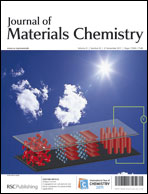The impact of electronic structures on the functionality of transition metal oxide-based intermediate connectors for tandem organic light-emitting devices is investigated by studying the interfaces and the corresponding devices. For a typical transition metal oxide-based intermediate connector, consisting of a heterointerface between MoO3 and Mg-doped tris(8-quinolinolato)aluminum (Mg:Alq3), it is identified that MoO3 is essential to the charge generation and separation process, which occurs at the interface between MoO3 and the adjacent hole-transporting layer (HTL) viaelectron transfer from the highest occupied molecular orbital of the HTL into the conduction band of MoO3. In addition, the incorporation of a Mg:Alq3 layer is indispensable to the functionality of the intermediate connector, which not only facilitates the electron injection from MoO3 into the electron-transporting layer of the adjacent electroluminescent (EL) unit, but also blocks the leakage of holes across the intermediate connector into the HTL of the other adjacent EL unit.

You have access to this article
 Please wait while we load your content...
Something went wrong. Try again?
Please wait while we load your content...
Something went wrong. Try again?


 Please wait while we load your content...
Please wait while we load your content...